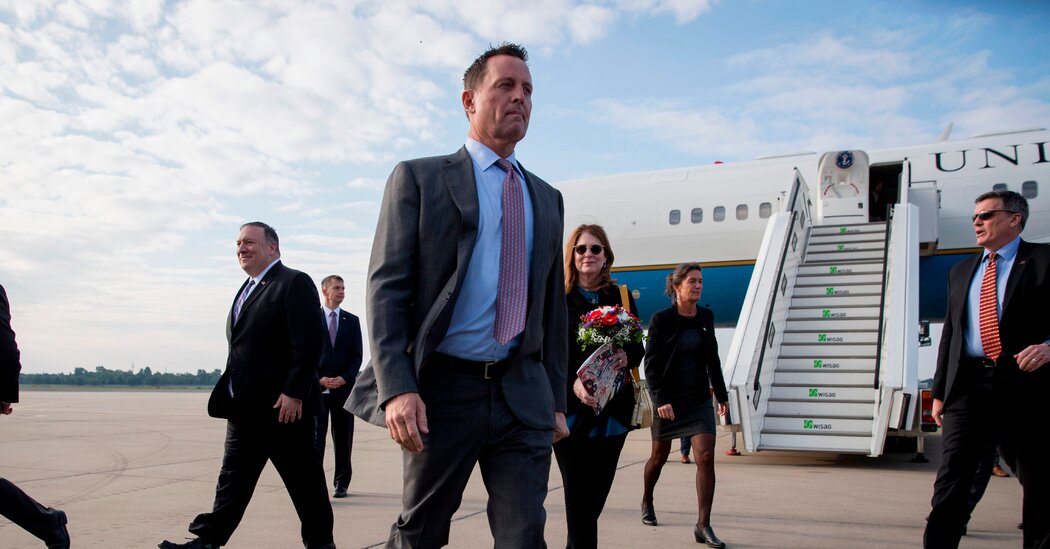The Impact Of Trump's Presidency On Transgender Rights

Table of Contents
Rollback of Obama-Era Protections
The Trump administration systematically dismantled many of the protections afforded to transgender individuals under the Obama administration. This rollback impacted crucial areas such as healthcare access, education, and workplace protections, resulting in significant setbacks for transgender equality.
-
Rescission of guidance on transgender students' access to bathrooms and sports in schools (Title IX): The Obama administration's guidance clarifying Title IX's protection against sex-based discrimination to include gender identity was rescinded. This left transgender students vulnerable to discrimination and harassment in schools, impacting their safety, mental health, and educational opportunities. Many transgender youth already face high rates of bullying and depression; this policy shift exacerbated these existing challenges.
-
Removal of protections under the Affordable Care Act (ACA), impacting access to healthcare: The Trump administration actively sought to undermine the ACA, impacting access to healthcare, including crucial medical transition-related services for transgender individuals. The loss of healthcare coverage directly affected access to hormone replacement therapy (HRT), gender-affirming surgeries, and mental healthcare, vital for the well-being of transgender people.
-
Reversal of workplace discrimination protections for transgender individuals: The administration's actions effectively weakened protections against workplace discrimination based on gender identity. This made it significantly harder for transgender individuals to secure and maintain employment, leading to economic insecurity and increased vulnerability. The lack of legal protection emboldened discrimination and fostered a hostile work environment for many.
The Military Ban
One of the most controversial policies enacted during the Trump presidency was the ban on transgender individuals serving openly in the military. This policy, announced in 2017, barred transgender individuals from serving unless they met stringent conditions, effectively barring most transgender individuals from military service.
-
Details of the ban: The ban prohibited transgender individuals from openly serving in the military, requiring them to serve in their assigned sex at birth. This policy was widely criticized for its discriminatory nature and lack of consideration for the contributions of transgender service members.
-
Legal challenges and their outcomes: The ban faced numerous legal challenges, with courts initially issuing injunctions against its implementation. However, the Supreme Court ultimately allowed the ban to proceed, impacting many transgender service members' careers and futures.
-
Impact on recruitment, morale, and readiness: The ban damaged military recruitment efforts and negatively affected the morale and readiness of the armed forces. It sent a message that the military was not inclusive and did not value diversity, undermining trust and potentially hindering operational effectiveness.
-
The human cost: Beyond the legal and strategic implications, the ban inflicted significant emotional and psychological harm on many transgender service members and their families. Many were forced to either conceal their identities or leave the service they had dedicated their lives to.
Bathroom Bills and State-Level Legislation
The Trump administration’s stance on transgender rights indirectly enabled a surge in anti-transgender legislation at the state level. This included so-called "bathroom bills" and other measures restricting access to public accommodations and sports participation for transgender individuals.
-
Increased state-level legislation targeting transgender individuals: Numerous states passed laws restricting access to bathrooms and changing facilities aligning with an individual's gender identity. These laws often targeted transgender women, forcing them to use bathrooms that did not align with their gender identity.
-
The role of the Trump administration: While not directly enacting these laws, the Trump administration's rhetoric and policies created a climate in which such legislation was more likely to be enacted and faced less federal pushback. The administration's lack of vocal opposition emboldened anti-transgender forces at the state level.
-
Impact on safety and well-being: These laws contributed to a climate of fear and insecurity for transgender individuals, impacting their daily lives, safety, and psychological well-being. The laws increased vulnerability to harassment, assault, and discrimination.
The Rise of Anti-Transgender Rhetoric
The Trump presidency was marked by a significant increase in anti-transgender rhetoric, originating from various sources and shaping public perception.
-
Examine the increase in anti-transgender rhetoric: The administration’s statements and policies often fueled anti-transgender sentiments, creating a climate of intolerance and hostility. This rhetoric often played out in social media, mainstream media, and political discourse, negatively shaping public opinion.
-
Link the rhetoric to potential increases in violence and discrimination: The increase in anti-transgender rhetoric is frequently linked to a corresponding increase in violence and discrimination against transgender individuals. The rhetoric provided a platform for hate groups and individuals to justify their actions and further marginalize transgender people.
-
Discuss the impact of this rhetoric on public perception and support for transgender rights: This negative rhetoric significantly impacted public perception and support for transgender rights. The constant barrage of negative messaging made it more difficult to advance pro-transgender legislation and build public support for transgender equality.
Conclusion
The Trump administration's policies and actions significantly impacted the lives and rights of transgender individuals in the US. The rollback of Obama-era protections, the military ban, and the rise of state-level anti-transgender legislation, all fueled by a climate of anti-transgender rhetoric, created substantial barriers to transgender equality. The legacy of this period continues to resonate, underscoring the ongoing need for continued advocacy and legal challenges to protect and advance transgender rights. The fight for transgender equality is far from over. Continue to learn about the ongoing struggles, support LGBTQ+ organizations and advocacy groups, and demand fair treatment and full equality for transgender individuals. Stay informed about current legislation impacting transgender rights and advocate for change in your community. Demand fair treatment and full equality for transgender individuals.

Featured Posts
-
 Tesla Stock Decline And Tariffs Push Elon Musks Net Worth Below 300 Billion
May 10, 2025
Tesla Stock Decline And Tariffs Push Elon Musks Net Worth Below 300 Billion
May 10, 2025 -
 Trumps Economic Policy The Role Of Tariffs Per Warner
May 10, 2025
Trumps Economic Policy The Role Of Tariffs Per Warner
May 10, 2025 -
 Nyt Strands Crossword Puzzle April 6 2025 Hints And Strategies
May 10, 2025
Nyt Strands Crossword Puzzle April 6 2025 Hints And Strategies
May 10, 2025 -
 Leon Draisaitl Injury Update Oilers Star Expected Back For Playoffs
May 10, 2025
Leon Draisaitl Injury Update Oilers Star Expected Back For Playoffs
May 10, 2025 -
 Palantir Stock Assessing The 30 Decline And Future Potential
May 10, 2025
Palantir Stock Assessing The 30 Decline And Future Potential
May 10, 2025
